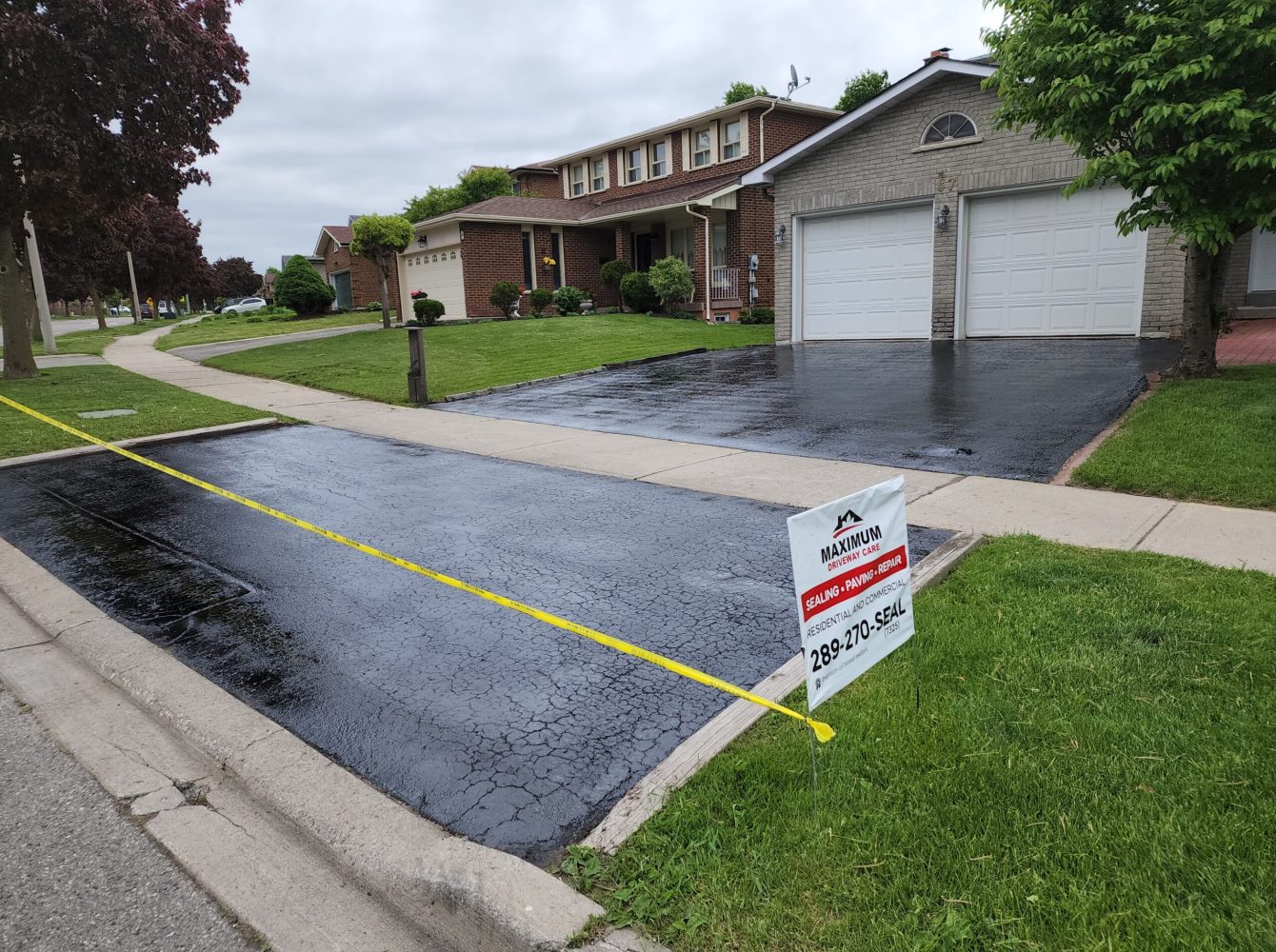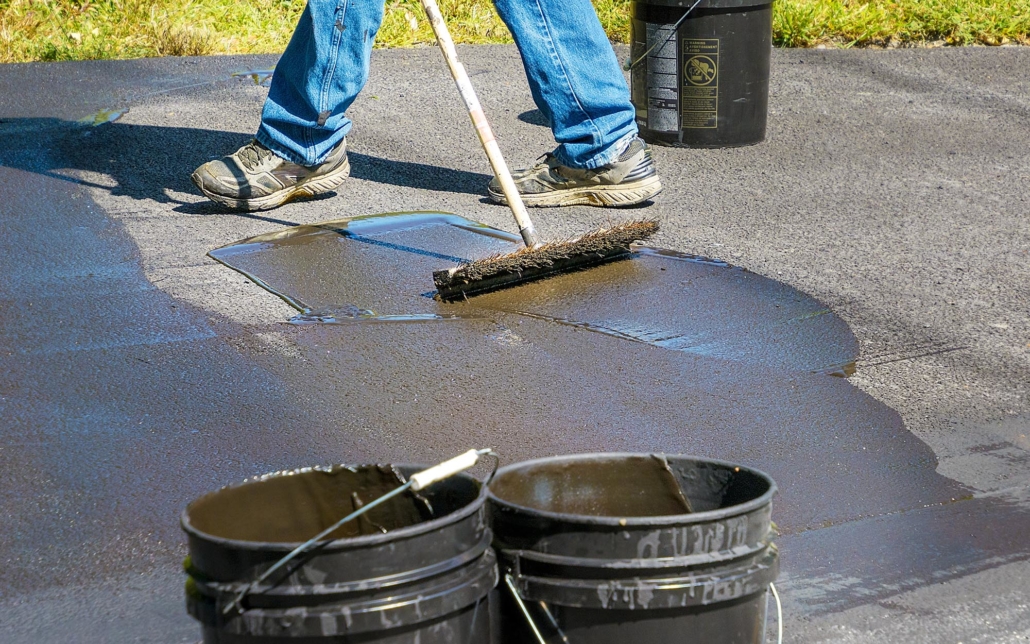Make Best Use Of Financial Investment Returns: Angled Car Park Excellence with Asphalt Sealing
Wiki Article
Hot Mix Asphalt: A Sustainable Option for Pavement
Warm Mix Asphalt (HMA) has actually emerged as a leading lasting option for sidewalk options, supplying a myriad of ecological benefits and innovative innovations. As the need for environment-friendly building and construction methods expands, exploring the subtleties of HMA's sustainability can supply valuable understandings right into the future of sidewalk services.Ecological Benefits of Hot Mix Asphalt

In Addition, Warm Mix Asphalt helps to mitigate urban heat island results. Its dark shade soaks up sunshine, decreasing the quantity of heat showed back into the atmosphere contrasted to lighter-colored pavements. This can reduce ambient temperatures in urban areas, lowering the need for air conditioning and eventually decreasing energy usage.
In addition, Warm Mix Asphalt adds to improved stormwater monitoring. Its permeable nature enables water to recharge and infiltrate the pavement groundwater products, decreasing drainage and the risk of flooding. These environmental advantages make Warm Mix Asphalt a sustainable selection for paving freeways and roadways.
Energy Efficiency in HMA Manufacturing
Is power efficiency a critical aspect in the production of Hot Mix Asphalt (HMA)? Power plays a substantial role in the production of HMA, influencing both expense and ecological sustainability. One vital aspect of energy efficiency in HMA manufacturing is the usage of cozy mix asphalt (WMA) modern technologies.Moreover, improvements in plant modern technologies have actually led to even more energy-efficient HMA manufacturing procedures. Modern plants are created with features like recycled asphalt pavement (RAP) handling capabilities, efficient heater systems, and enhanced insulation, all contributing to energy cost savings. By enhancing power usage in HMA production, the sector can minimize its carbon impact while preserving top notch sidewalk materials. Power efficiency is, as a result, an important consideration in making certain the sustainability of Hot Mix Asphalt manufacturing.
Recyclability of Hot Mix Asphalt
The recyclability of Warm Mix Asphalt (HMA) is a critical facet of its sustainability and long-term ecological impact. HMA is among one of the most recycled materials in the United States, with over 100 million lots of reclaimed asphalt sidewalk (RAP) being recycled yearly in brand-new sidewalk building and construction. Reusing HMA provides several ecological advantages, such as reducing the need for virgin products, reducing energy intake throughout manufacturing, and decreasing the quantity of waste sent out to landfills.The procedure of reusing HMA includes crushing the existing pavement, squashing it into smaller sized items, and mixing it with brand-new aggregate and asphalt binder to produce a recycled mix. This recycled mix can commonly do along with and even better than traditional HMA, while requiring fewer basic materials and creating lower greenhouse gas emissions. By including RAP into new pavement tasks, roadway agencies can save all-natural resources, decrease prices, and lessen the environmental impact of roadway building and construction and upkeep activities. Generally, the recyclability of HMA plays a significant duty in advertising lasting techniques within the sidewalk sector.

Long-Term Efficiency of HMA
Asphalt sidewalks show durability and durability over an extensive duration, reflecting the long-term performance of Warm Mix Asphalt (HMA) Additionally, innovations in HMA modern technology, such as the use of polymer-modified binders and hot mix asphalt cozy mix asphalt, have actually better boosted the sturdiness and long life of HMA sidewalks. By focusing on top quality building and construction and upkeep methods, HMA proceeds to show itself as a affordable and lasting solution for lasting pavement facilities.
HMA: Longevity and Sustainability
Demonstrating both longevity and sustainability, Warm Mix Asphalt (HMA) has ended up being a keystone in the building and construction of long-lasting sidewalk facilities - regrading. HMA's durability comes from its capability to endure heavy lots, rough climate condition, and high traffic quantities, making it a reputable choice for highways, highways, and airport paths. The structure of HMA, which commonly includes accumulations, binder, and filler, plays an important function in improving its durability and resistance to tear and use
Moreover, HMA's sustainability depends on its recyclability and energy-efficient manufacturing process. The ability to reuse recovered asphalt sidewalk (RAP) in brand-new HMA combinations decreases the demand for virgin products and reduces the environmental influence of pavement building and maintenance. Furthermore, the power effectiveness of generating HMA hinges on its lower blending temperature levels compared to various other pavement materials, bring about lowered power consumption and greenhouse gas discharges.
Verdict
To conclude, hot mix asphalt (HMA) supplies a sustainable option for sidewalk with its eco-friendly qualities. HMA's recyclability, power efficiency in production, and long-lasting resilience make it an environment-friendly option for roadway building and construction. By conserving natural sources, minimizing waste, and decreasing greenhouse gas exhausts, HMA plays a crucial duty in advertising sustainability in facilities development. Its capacity to mitigate city warmth island effects even more emphasizes its relevance in creating eco aware and resilient pavement systems.
HMA is one of the most recycled materials in the United States, with over 100 million bunches of redeemed asphalt sidewalk (RAP) being reused every year in new pavement building.The procedure of reusing HMA includes milling the existing sidewalk, crushing it right into smaller items, and mixing it with brand-new accumulation and asphalt binder to develop a recycled mix.Asphalt sidewalks show durability and durability over an extensive duration, mirroring the long-term performance of Hot Mix Asphalt (HMA) In addition, advancements in HMA technology, such as the use of polymer-modified binders and cozy mix asphalt, have additionally boosted the resilience and durability of HMA sidewalks. The capacity to recycle reclaimed asphalt sidewalk (RAP) in brand-new HMA blends decreases the need for virgin materials and reduces the ecological impact of pavement building and construction and upkeep.
Report this wiki page